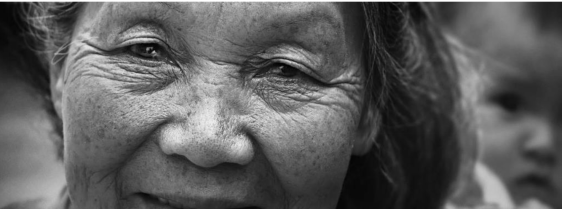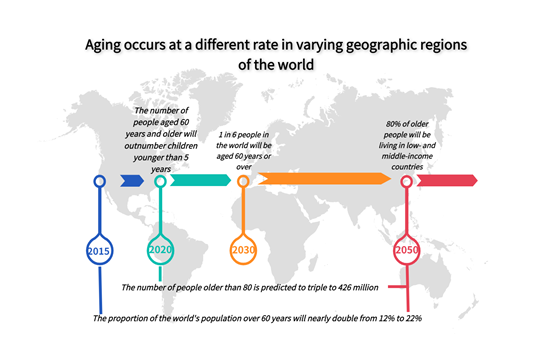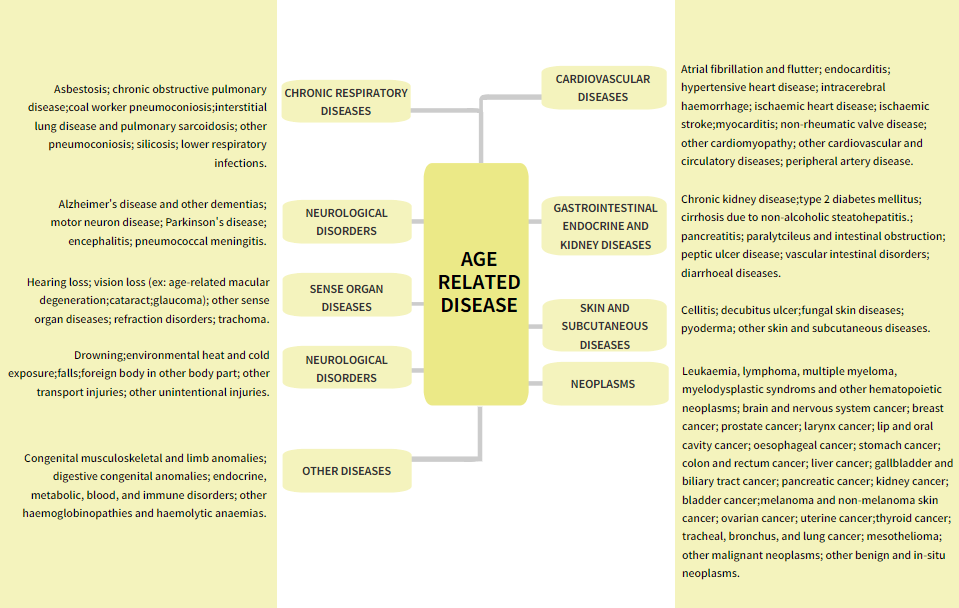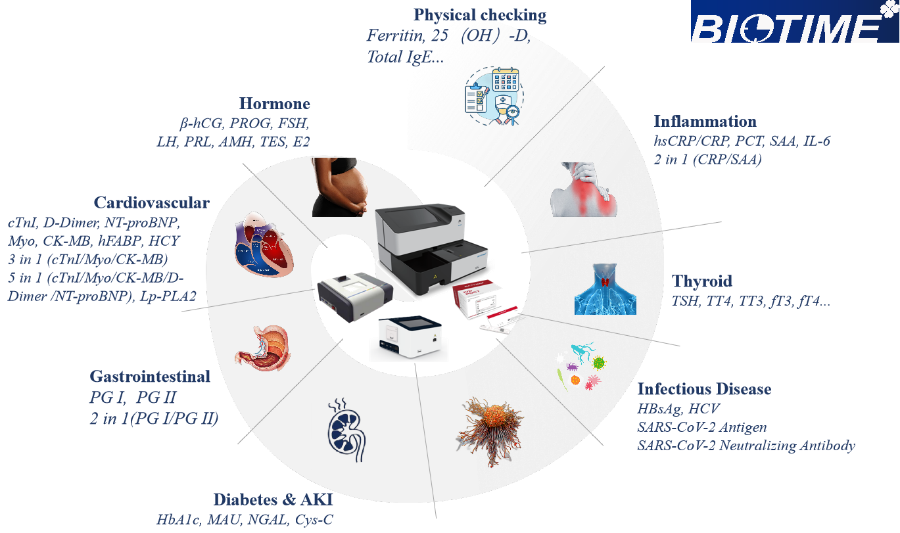“Most people don’t grow up. Most
people age. They find parking spaces, honour their credit cards, get married,
have children, and call that maturity. What that is, is aging.”
—Maya Angelou.

Recent
Findings
Aging is a complex process that leads
to changes in all the systems of the body and all the functions of the person;
however, aging develops at different rates in different people, and
chronological age is not always consistent with biological age. One of the
biggest mega trends impacting the world today is population aging. Aging is a
topic that has captivated both scientists and philosophers throughout history,
but aging as a population scenario emerged on a worldwide scale for the first
time in the last century. Some changes
in the heart and blood vessels normally occur with age. However, many other
changes that are common with aging are due to or worsened by modifiable
factors. If not treated, these can lead to heart disease.

Data from WHO.
Aging and Life Expectancy
Aging and life expectancy are closely related. In a broad sense, determining an individual’s life expectancy is also a way of schematizing his or her aging process. Life expectancy is a statistical measure of the average time an organism is expected to live, based on the year of its birth (LEB), its current age and demographic factors including gender [86]. In the last decades, life expectancy has increased in high income country; the rise in human life expectancy has involved declines in intrinsic and extrinsic mortality processes associated, respectively, with senescence and environmental challenges.
In association to this increased longevity, there are diseases called age-related that increase quadratically with age and cause a progressive loss of physical, mental, and cognitive integrities, leading to impaired function and increased vulnerability to morbidity, mortality and disability, in addition to increasing care needs and age-related burden measured through the sum of disability-adjusted life years (DALYs) of these diseases among these adults. Ninety-two of the 293 of the Global Burden of Disease causes were identified as age-related diseases. In particular, cardiovascular disease, neoplasm, and chronic respiratory disorders are those with higher age-related disease burden.

Have your blood
pressure checked, and physical check tested specifically if you have diabetes,
heart disease, kidney problems, or certain other conditions, your blood
pressure may need to be monitored more closely.
If your
cholesterol level is normal, have it rechecked every 2-3 years. If you have
diabetes, heart disease, kidney problems, or certain other conditions, your
cholesterol may need to be monitored more closely.
We, Biotime point of care testing manufacturing company offers the
best solutions to ensure that your aging, and well-being concerns are well
addressed. Although we all have
our own ideas of what it means to live fully, there's one thing we all have in
common: each one of us wants to live a life that's as healthy and satisfying as
possible. Together, we will explore what it means to live fully as individuals
and as communities.

Reference
1. He W, Goodkind D, Kowal P. An aging world: 2015, International Population Reports. U.S. Government Printing Office, Washington DC.
2. Chang AY, Skirbekk VF, Tyrovolas S, Kassebaum NJ, Dieleman JL. Measuring population ageing: an analysis of the Global Burden of Disease Study 2017. The Lancet Public Health 2019;4(3):e159-e67.
3. Colloca G, Tagliaferri L, Di Capua B, Gambacorta MA, Lanzotti V, Bellieni A, et al. Management of the elderly cancer patients complexity: the radiation oncology potential. Aging Dis. 2020;11(3):649e657.
4. Cevenini E, Invidia L, Lescai F, Salvioli S, Tieri P, Castellani G, et al. Human models of aging and longevity. Expert Opin Biol Ther. 2008;8(9):1393–405.
5. CAS PubMed Google Scholar
6. Colloca G, Santoro M, Gambassi G, Bernabei R. Aging and the management of related physiological changes. Geriatr Med Intell. 2009;18(2):67–78.
7. Booth H, Tickle L. Mortality modelling and forecasting: a review of methods. 2008.
8. Siegel JS. The demography and epidemiology of human health and aging. Dordrecht: Springer Netherlands; 2012. p. 1–985.
9. López-Otín C, Blasco MA, Partridge L, Serrano M, Kroemer G. The hallmarks of aging. Cell. 2013 [cited 2016 Oct 1];153(6):1194–217.